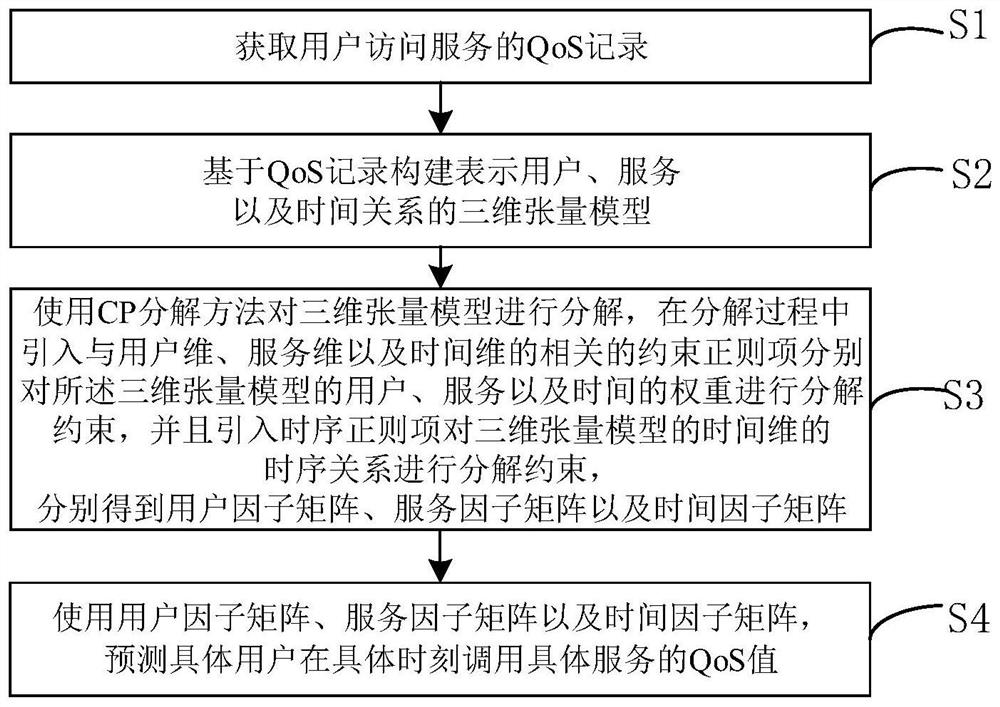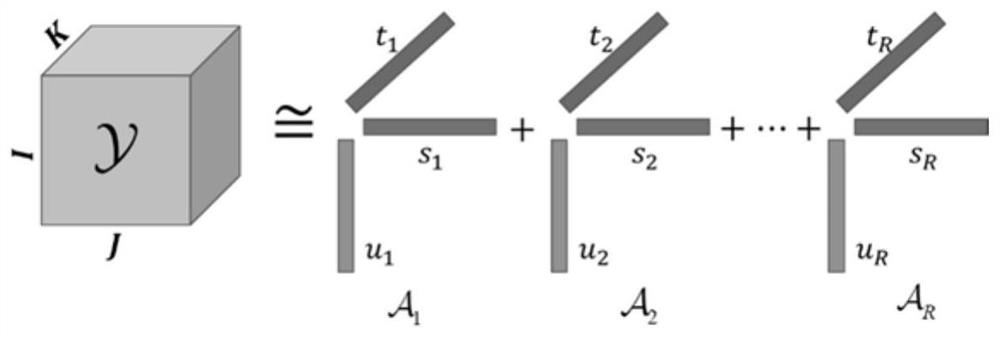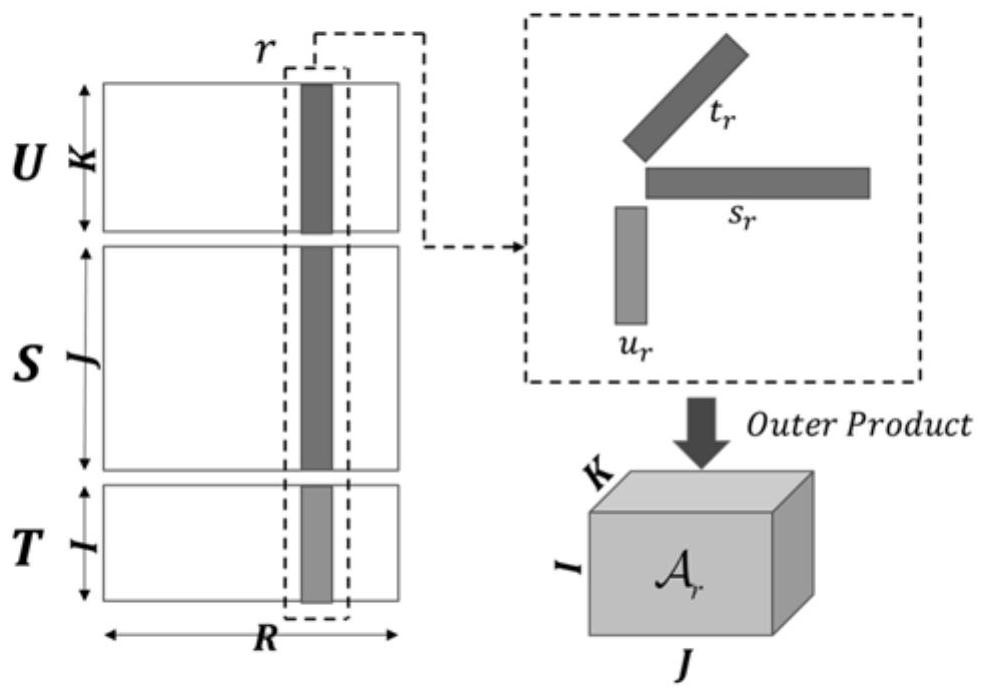Time sequence regularization tensor decomposition-based QoS (Quality of Service) prediction method in mobile edge computing
A prediction method and time sequence technology, applied in constraint-based CAD, calculation, computer-aided design, etc., can solve problems such as inaccuracy, and achieve the effect of improving accuracy
- Summary
- Abstract
- Description
- Claims
- Application Information
AI Technical Summary
Problems solved by technology
Method used
Image
Examples
Embodiment 1
[0069] like figure 1 As shown, a QoS prediction method based on time series regularization tensor decomposition in mobile edge computing provided by the present invention includes:
[0070] S1, obtain the QoS record of the user access service;
[0071] S2, constructing a three-dimensional tensor model representing the relationship between users, services and time based on the QoS records;
[0072] Tensors are the generalization of vectors (first-order tensors) and matrices (second-order tensors) to higher-order sequences, and can be called multidimensional matrices or multidimensional arrays. As a powerful tool for high-dimensional data representation and analysis, it has been It is widely used in data mining, computer vision, image processing, traffic flow analysis and other research fields. Tensors are usually written in Euler letters Matrices are represented by uppercase letters X,Y…, vectors are represented by lowercase letters x,y…. an N-dimensional tensor can be c...
Embodiment approach
[0100] As an optional implementation manner of the present invention, the above step S3 includes:
[0101] Step 31: construct the first optimization problem with the smallest error between the approximate tensor of the predicted three-dimensional tensor model and the original tensor;
[0102] Step 32: When the QoS obtained by user i calling service j at time k is the same as the predicted QoS obtained by user i calling service j at time k, then under the condition that the first optimization problem is the smallest, transform the first optimization problem into the first optimization problem. Two optimization problems;
[0103] Step 33: Introduce the user dimension, the constraint regular terms related to the user dimension, the service dimension and the time dimension in the second optimization problem. The weights of the user, service and time of the three-dimensional tensor model are decomposed and constrained respectively, and the time series regularization is introduced. ...
PUM
 Login to View More
Login to View More Abstract
Description
Claims
Application Information
 Login to View More
Login to View More - R&D
- Intellectual Property
- Life Sciences
- Materials
- Tech Scout
- Unparalleled Data Quality
- Higher Quality Content
- 60% Fewer Hallucinations
Browse by: Latest US Patents, China's latest patents, Technical Efficacy Thesaurus, Application Domain, Technology Topic, Popular Technical Reports.
© 2025 PatSnap. All rights reserved.Legal|Privacy policy|Modern Slavery Act Transparency Statement|Sitemap|About US| Contact US: help@patsnap.com



